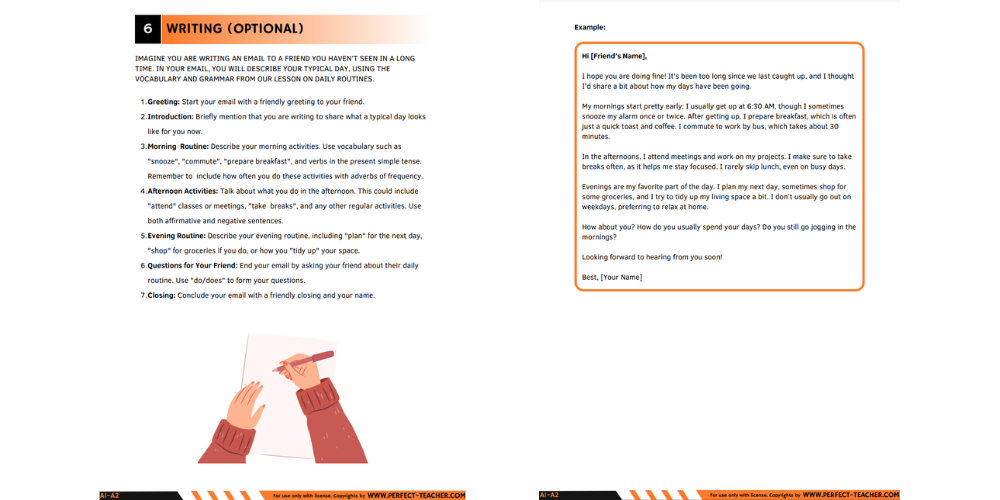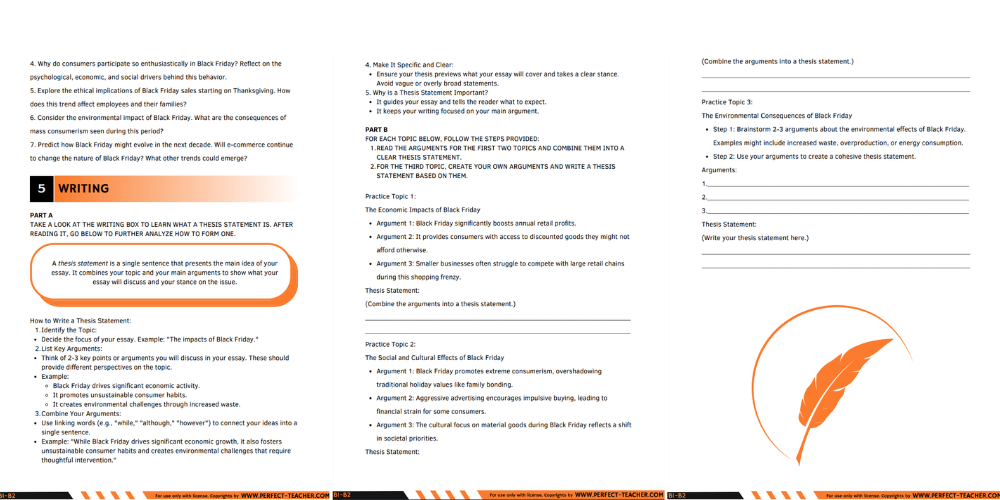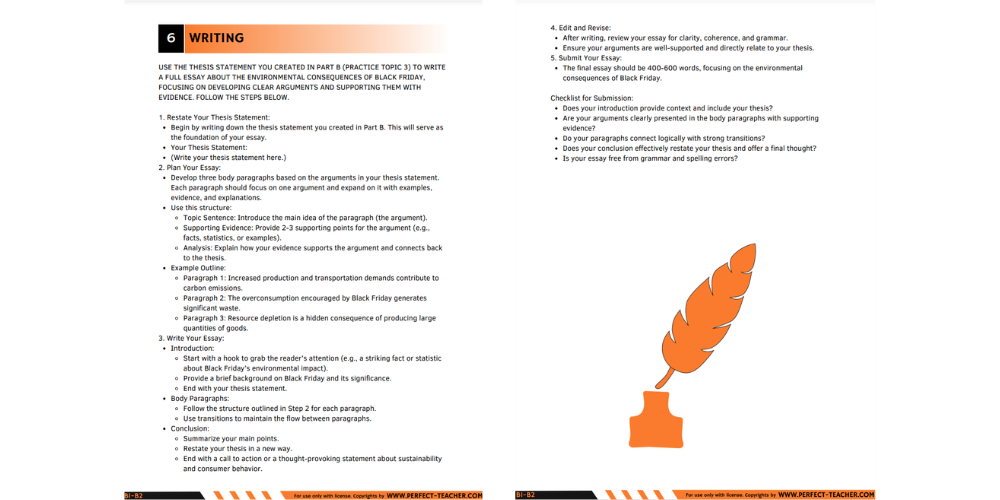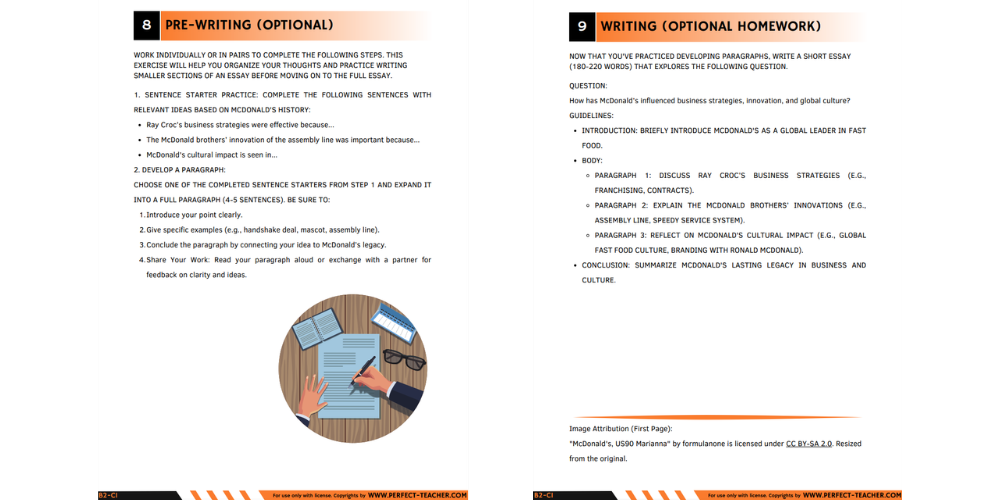Introduction

Helping ESL learners progress from hesitant sentence construction to confidently writing essays is one of the most rewarding aspects of teaching. This guide equips ESL teachers with actionable strategies and practical exercises to make writing a key component of their lesson plans—tailored for students across beginner-elementary, intermediate-upper intermediate, and upper intermediate-advanced levels.
What This Article Covers
Quick Navigation (Click on the links to jump to each section)
- Why ESL Writing Is a Must-Have Skill
- Key Benefits of Writing for ESL Learners
- Common ESL Writing Challenges by Skill Level
- 6 Proven Strategies to Elevate ESL Writing Skills
- Practical Writing Activities for Every Skill Level
- Bonus Tips to Maximize Writing Success
- Conclusion: Empower Students Through Writing
- FAQs
Why ESL Writing Is a Must-Have Skill
Writing plays a pivotal role in mastering English as a Second Language (ESL). By focusing on writing skills, teachers help students strengthen their understanding of grammar, vocabulary, and structure while fostering critical thinking and self-expression.
Key Benefits of Writing for ESL Learners
- Language Reinforcement: Writing solidifies lessons in grammar, syntax, and vocabulary.
- Critical Thinking Development: Organizing thoughts into coherent sentences improves logical reasoning.
- Personal Expression: Writing empowers students to share their unique perspectives and emotions.
- Preparation for Real-World Success: Whether for essays, reports, or professional communication, writing is essential.
Common ESL Writing Challenges by Skill Level
To create effective lesson plans, teachers must address specific obstacles learners face at different levels.
| Skill Level | Challenges |
| Beginner-Elementary | Limited vocabulary, difficulty forming sentences, and basic grammar errors. |
| Intermediate-Upper Intermediate | Struggles with paragraph structure, sentence variety, and transitions. |
| Upper Intermediate-Advanced | Refining tone, mastering idioms, and using advanced grammatical structures. |
6 Proven Strategies to Elevate ESL Writing Skills

1. Assess Skill Levels Early
Begin with diagnostic exercises to evaluate grammar, coherence, and vocabulary. Tools like Grammarly or writing rubrics help pinpoint specific areas for improvement.
2. Set Clear Writing Goals
Tailor exercises to focus on measurable objectives such as sentence construction, cohesive paragraphs, or advanced writing styles.
3. Introduce Varied Writing Formats
Keep learners engaged with diverse genres, adjusted to their levels:
- Beginner-Elementary: Picture descriptions, simple emails, and short sentences.
- Intermediate-Upper Intermediate: Letters, opinion paragraphs, structured essays, and expository essays.
- Upper Intermediate-Advanced: Argumentative essays, blogs, creative writing tasks, and expository essays.
4. Scaffold Writing Tasks
Break down complex tasks into manageable steps:
- For Beginner-Elementary Students: Use sentence starters, templates, or fill-in-the-blanks.
- For Intermediate-Upper Intermediate Students: Provide frameworks with clear paragraph guides.
- For Upper Intermediate-Advanced Students: Offer thesis-writing exercises and structured outlines.
5. Encourage Peer Feedback
Promote collaborative learning with peer reviews:
- Beginner learners can exchange simple written tasks for basic corrections.
- Advanced learners can provide detailed critiques using tools like Google Docs or BoomWriter.
6. Leverage Technology for Writing Practice
Incorporate digital tools to make lessons engaging:
- Beginner-Elementary: Apps like Quizlet for vocabulary-building activities.
- Intermediate-Upper Intermediate: ProWritingAid for paragraph editing.
- Upper Intermediate-Advanced: Online platforms like BoomWriter for collaborative storytelling.
Practical Writing Activities for Every Skill Level
Beginner-Elementary Level
Activity: Writing a Friendly Email
- Objective: Teach students to construct simple sentences while describing their daily routines.
- How It Works:
- Students write an email to a friend describing their typical day.
- Prompts include:
- Morning Routine: “I wake up, prepare breakfast, and commute to work.”
- Afternoon Activities: “I attend classes and take short breaks.”
- Evening Routine: “I relax, plan my next day, and tidy up.”
- Include questions for the recipient to make the activity interactive.

- Access This Lesson: Daily Routines – Everyday Dialogues
Intermediate-Upper Intermediate Level
Activity: Writing About Black Friday (Step-by-Step)
- Objective: Teach students to develop critical thinking and essay-writing skills by learning how to write a thesis statement, practicing combining arguments, and composing a full essay.
- Process Overview:
- Learning to Write a Thesis Statement:
- Explain the purpose of a thesis statement and demonstrate combining arguments into a focused thesis.
- Practicing with Provided Arguments:
- Students use pre-defined topics and arguments related to Black Friday to craft thesis statements.
- Creating Arguments:
- Students brainstorm arguments and develop a thesis on a topic like ‘The Environmental Consequences of Black Friday.
- Writing a Full Essay:
- Guide students through outlining and composing essays based on their thesis statements.
- Learning to Write a Thesis Statement:
Encourage peer review and revision.


- Access This Lesson: From Red to Black: Decoding Black Friday
Upper Intermediate-Advanced Level
Activity: Exploring McDonald’s Influence
- Objective: Teach students to write a structured essay analyzing McDonald’s global impact on business, innovation, and culture.
Step 1: Build Ideas with Sentence Starters
- Provide prompts like:
- “Ray Croc’s business strategies were effective because…”
- “The McDonald brothers’ innovation of the assembly line was important because…”
- “McDonald’s cultural impact is seen in…”
- Task: Students complete these to organize their ideas.
Step 2: Expand Ideas into Paragraphs
- Turn completed sentence starters into full paragraphs using:
- Topic Sentence
- Supporting Evidence
- Concluding Sentence
Step 3: Write the Full Essay
- Question: How has McDonald’s influenced business strategies, innovation, and global culture?
- Structure:
- Introduction: Briefly introduce McDonald’s and include a thesis.
- Body Paragraphs:
- Discuss Ray Croc’s franchising strategies.
- Explain the McDonald brothers’ innovations.
- Reflect on McDonald’s cultural influence.
- Conclusion: Summarize McDonald’s legacy and global impact.

- Access This Lesson: McDonald’s – Who Is Really Behind the Restaurant’s Success?
Bonus Tips to Maximize Writing Success
- Provide Examples: Crucial for beginners to visualize sentence and paragraph structure.
- Feedback: Highlight strengths and offer actionable advice.
- Revision: Encourage iterative drafts to improve content and fluency.
Conclusion: Empower Students Through Writing
Writing is not just a skill—it’s a bridge to academic achievement, personal expression, and professional success. By incorporating these tailored exercises and strategies into your lesson plans, you can inspire ESL students to discover their voice and refine their skills.
Start small with a beginner-level email activity or challenge advanced students with a thought-provoking essay. With consistent practice and your guidance, your learners will excel in writing and beyond.
FAQs
1. What are some easy writing exercises for beginner ESL students?
Focus on simple tasks like writing a friendly email or describing a picture to build foundational skills.
2. How can I make writing fun for students who dislike it?
Use engaging real-world applications such as writing a social media post or reviewing a favorite movie.
3. How do I teach thesis writing effectively?
Break it into steps: brainstorm arguments, use linking words, and provide examples for clarity.
4. How do I encourage advanced students to write detailed essays?
Provide structured outlines and emphasize the use of examples and analysis for supporting their arguments.